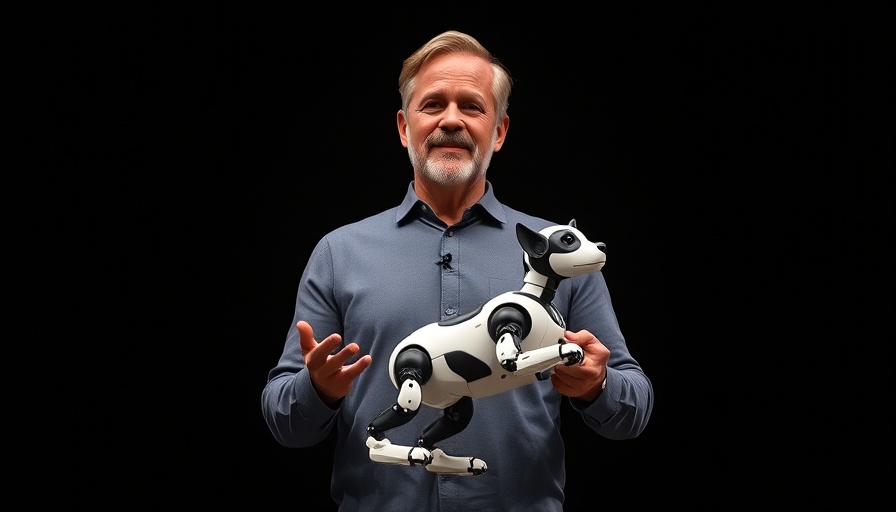
Revolutionizing Robotics: What It Means for Veterinary Practices
The recent announcement by Jensen Huang regarding a cutting-edge robotics engine promises exciting advancements not only in entertainment with applications like Disney's ‘Star Wars’ robots but also in critical sectors like veterinary medicine. As robotics technology sees rapid developments, veterinary clinics have the unique opportunity to incorporate such innovations to improve operational efficiency, enhance patient care, and ultimately attract more clients.
The Intersection of Technology and Veterinary Care
Veterinary professionals are already adopting high-tech solutions ranging from telemedicine to AI diagnostics. With the new robotics engine highlighting advancements in precision and interactivity, clinics might explore using similar automation technologies for routine procedures, patient monitoring, or even enhancing client interactions. The integration of robotics can lead to more streamlined workflows and improved patient outcomes, which can further entice pet owners to seek care at innovative clinics.
Historical Context: Robotics in Veterinary Medicine
Robots have gradually entered the medical sphere, with surgical robots already being used in human healthcare for their precision. In veterinary settings, robotic tools can assist in surgeries or help manage repetitive tasks, allowing veterinarians to focus more on patient-centered care. Thus, understanding how robotics have been deployed in human medicine can provide a framework for their benefits and applications in veterinary practices.
Enhancing Client Experience: The Role of Robotics
Imagine a future where robotic systems can not only assist in clinical tasks but also engage clients. From greeting pet owners to providing educational information about pet care, a robotic assistant could significantly improve client satisfaction. This level of interaction can build stronger bonds with clients, making them more likely to return for additional services and refer others.
Looking Ahead: Future Trends and Predictions
The advancements in robotics herald a new era in veterinary clinics. With Jensen Huang's announcement at the forefront, we can expect a cascade of innovations that may introduce robotic assistants in clinics, potentially managing appointment bookings or following up on patient care remotely. Staying ahead of these trends is crucial for clinic owners looking to maintain a competitive edge in the evolving landscape of pet healthcare.
Practical Insights: Implementing Robotic Solutions
For veterinary clinics considering the implementation of robotic systems, a strategic approach is essential. Start by identifying areas within the practice that can benefit from automation. This could involve automating inventory management, managing appointment schedules, or using soft robotic aids for examinations. Furthermore, investing in staff training and education about new technologies can foster a culture of innovation within the clinic.
Embracing Innovation: Next Steps for Veterinary Clinics
As the technological landscape evolves, veterinary clinics should not shy away from embracing innovation. Networking with technology providers, attending workshops on new technologies, and participating in conferences can yield invaluable insights into how best to implement robotics in their practices.
Robotics in veterinary clinics is not just a future possibility—it’s a growing reality that can enhance operations, improve client satisfaction, and position clinics as leaders in the industry. For veterinary clinic owners and managers, the call to action is clear: become informed about the latest technologies and be proactive in incorporating them into their practices.
 Add Row
Add Row  Add
Add 

 Add Row
Add Row  Add Element
Add Element 




Write A Comment